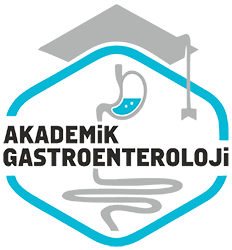Nisan 2013
Kolonik obstruksiyona neden olan dev mide stromal tümörü
Colonic obstruction related to a giant gastric stromal tumor
- Ana Sayfa
- Sayılar
- Nisan 2013
- Kolonik obstruksiyona neden olan dev mide stromal tümörü...
Özet
Gastrointestinalstromal tümörler, sindirim sisteminin En sık karsilasilan mezenkimal tümörleri olmakla birlikte tüm gastrointestinal sistem tümörlerinin %1’den azini olusturmaktadır. Genellikle 4. dekad sonrasi görülmekle birlikte ortalama tanı yaşi 60’tir. En sık yerlestigi bölge mide olup genellikle karın ağrısı, kanama, karinda ele gelen kitle gibi semptomlara neden olarak erken dönemde tanı alabilmektedir. Bununla birlikte, nadiren de olsa asemptomatik seyredip dev boyutlara ula-sabilmektedir. Bunun sonucunda, intestinal obstrüksiyon, perforasyon gibi morbiditesi yüksek gastrointestinal sistem komplikasyonlarina yol açabilmektedir. Kitlenin temiz cerrahi sinir ile birlikte en blok rezeksiyonu esas tedavi yöntemidir. Histopatolojik incelemeye göre adjuvan tedavi en kisa sürede planlanmalidir. Bu çalışmada, dev mide stromal tümörüne bagli ileus tablosu gelişen bir hastamizin cerrahi tedavi ve takip sonuçlarını literatür esliginde tartışarak sunmak amaçlanmıştır.
Abstract
Gastrointestinal stromal tumor is the most common mesenchymal tumor of the alimentary tract, whereas it represents less than 1% of all gastrointestinal system tumors. The diagnosis is generally made after the 4th decade, at a mean age of 60 years. The stomach is the most common site of gastrointestinal stromal tumor, and the tumor usually causes symptoms such as abdominal pain, bleeding, and a palpable mass; hence, an early diagnosis can be made. However, it rarely remains asymptomatic and reaches giant sizes that lead to gastrointestinal system complications with high morbidity, including intestinal obstruction and perforation. The essential treatment method is en bloc resection of the mass with free surgical margin. Adjuvant therapy should be planned as soon as possible according to the histopathological examination. In this study, we aimed to present the clinical and postoperative outcomes of a patient with ileus related to a giant gastric stromal tumor.



